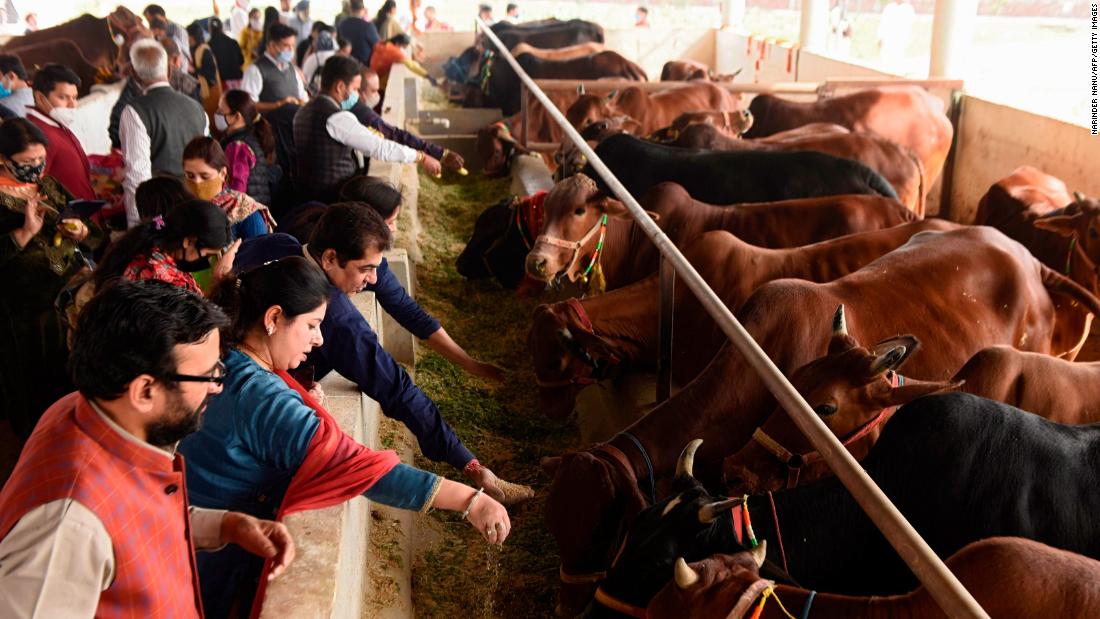The optional exam will take place annually, mainly for students from schools and universities, although the general public can also take it, said the country’s Rashtriya Kamdhenu Aayog (RKA), an agency created in 2012 for the protection of cows under the Ministry of Agriculture. Fisheries, Animal and Dairy Production.
“Science in cows must be explored”, president of RKA Vallabhai Kathiria said at a news conference on Tuesday. “I am also a cancer surgeon, so I can attest to that.”
“Even if a cow does not give milk, cow dung and urine are very precious,” he added.
A member of the opposition Indian National Congress Party, Priyank Kharge, criticized the move on Twitter.
Cows are a controversial subject in India, and many among the majority of the country’s Hindu population consider the animal sacred. Most states have banned their killing.
The political momentum to enforce these prohibitions has increased since Prime Minister Narendra Modi – whose Bharatiya Janata Party (BJP) is strongly aligned with conservative Hindu nationalists – came to power in 2014.
Clean and smart
RKA has launched a 54-page exam study guide, which includes topics such as “religious significance” and “medical significance” of cows.
“The cow is a living heritage not only from Hindus, but from humanity,” says the document. “In world traditions, the cow represents fertility, prosperity and life, and is often called the mother ancestor, perhaps because it is the first mammal to be domesticated by man.”
The document states that large-scale slaughter activity leads to major earthquakes, an unproven statement that suggests that the pain emitted by the mass slaughter can generate enough stress to trigger a seismic reaction.
He also claims that native (Indian) cows produce the best quality of milk in the world, compared to “exotic cows”.
“The quality is not good, but the quantity is greater”, says about the Jersey cow, a breed normally associated with high-quality creamy milk.
According to the document, native cows are “smart enough not to sit in dirty places” and are also more emotional than Jersey cows. “Whenever an unknown person approaches the Desi cow (India), it immediately gets up,” says the document.
Advertising tool?
“After the rise of the far-right government in India, the cow has become a political animal,” said Ghosh. “The cow is used as a tool to divide people, and the examination is seen as a way of placing the cow on a pedestal. These politicians don’t care about cows, they only care about politics ”.
During the 2014 national election campaign, Modi made a promise to end a “pink revolution” – a phrase he used to describe the slaughter of cattle across the country.
Other BJP lawmakers have taken it a step further.
“I promised to break the hands and legs of those who do not regard cows as mothers and to kill them,” Vikram Saini, a lawmaker in the state of Uttar Pradesh, said at an event in March 2017.
